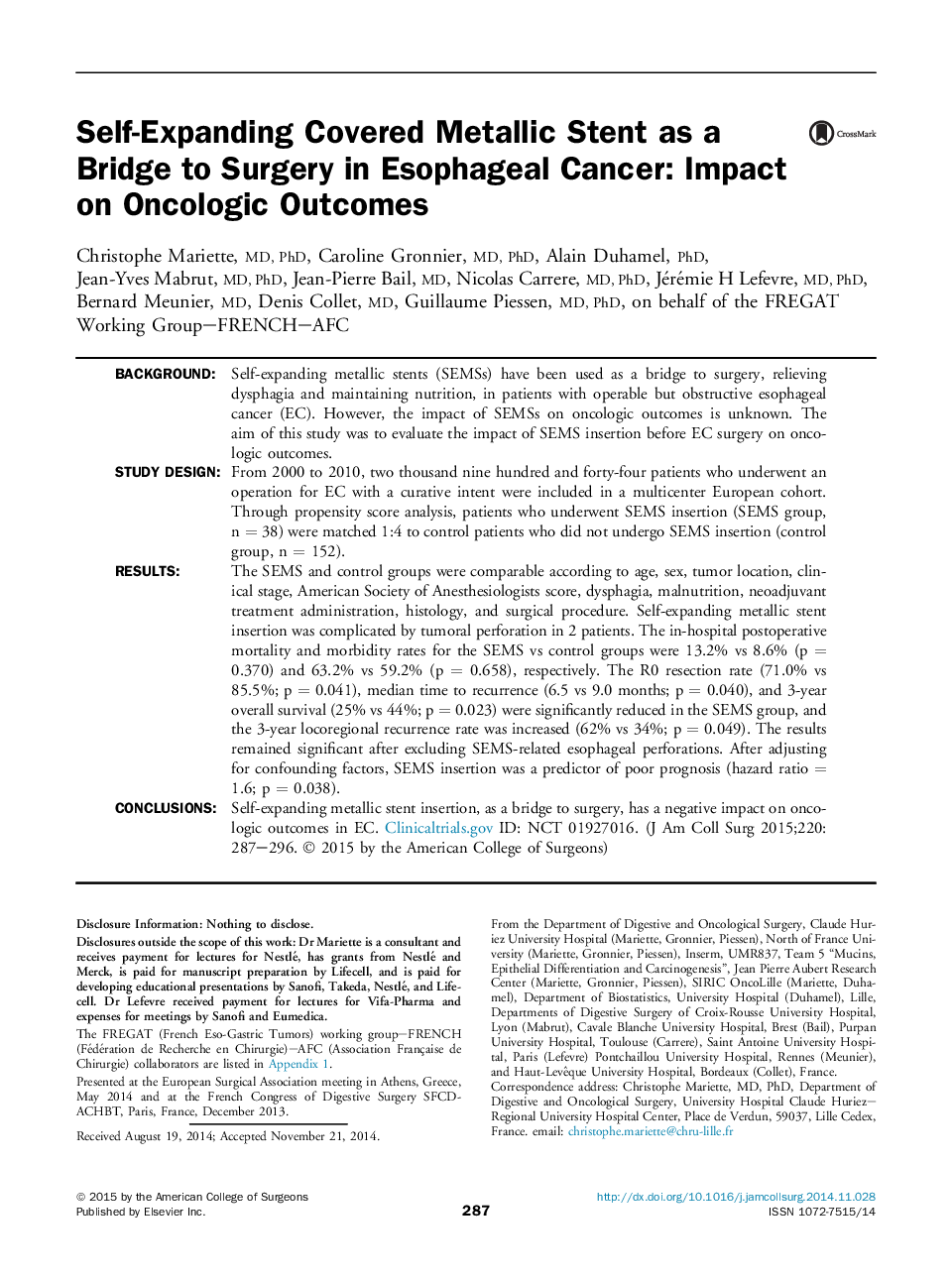| کد مقاله | کد نشریه | سال انتشار | مقاله انگلیسی | نسخه تمام متن |
|---|---|---|---|---|
| 4291762 | 1612222 | 2015 | 10 صفحه PDF | دانلود رایگان |
BackgroundSelf-expanding metallic stents (SEMSs) have been used as a bridge to surgery, relieving dysphagia and maintaining nutrition, in patients with operable but obstructive esophageal cancer (EC). However, the impact of SEMSs on oncologic outcomes is unknown. The aim of this study was to evaluate the impact of SEMS insertion before EC surgery on oncologic outcomes.Study DesignFrom 2000 to 2010, two thousand nine hundred and forty-four patients who underwent an operation for EC with a curative intent were included in a multicenter European cohort. Through propensity score analysis, patients who underwent SEMS insertion (SEMS group, n = 38) were matched 1:4 to control patients who did not undergo SEMS insertion (control group, n = 152).ResultsThe SEMS and control groups were comparable according to age, sex, tumor location, clinical stage, American Society of Anesthesiologists score, dysphagia, malnutrition, neoadjuvant treatment administration, histology, and surgical procedure. Self-expanding metallic stent insertion was complicated by tumoral perforation in 2 patients. The in-hospital postoperative mortality and morbidity rates for the SEMS vs control groups were 13.2% vs 8.6% (p = 0.370) and 63.2% vs 59.2% (p = 0.658), respectively. The R0 resection rate (71.0% vs 85.5%; p = 0.041), median time to recurrence (6.5 vs 9.0 months; p = 0.040), and 3-year overall survival (25% vs 44%; p = 0.023) were significantly reduced in the SEMS group, and the 3-year locoregional recurrence rate was increased (62% vs 34%; p = 0.049). The results remained significant after excluding SEMS-related esophageal perforations. After adjusting for confounding factors, SEMS insertion was a predictor of poor prognosis (hazard ratio = 1.6; p = 0.038).ConclusionsSelf-expanding metallic stent insertion, as a bridge to surgery, has a negative impact on oncologic outcomes in EC. Clinicaltrials.gov ID: NCT 01927016.
Journal: Journal of the American College of Surgeons - Volume 220, Issue 3, March 2015, Pages 287–296
